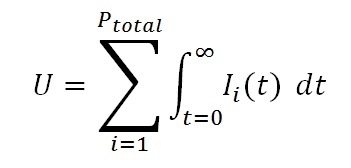The felicific calculus is an algorithm for calculating the degree or amount of pleasure that a specific action is likely to cause. The algorithm is also known as the utility calculus, the hedonistic calculus, and the hedonic calculus.
Here’s a work-in-progress spreadsheet to do the calculation. (Feel free to make improvements!)
Units of Pleasure and Pain
The units of measurements used in the felicific calculus are:
- Negend (aka dolor) – Unit of pain. Derived from the “negative end result”
- Posend (aka hedon) – Unit of pleasure. Derived from the “positive end result”
Variable Definitions
Variables of the pleasures and pains included in this calculation are:
- Intensity: How strong is the pleasure?
- Duration: How long will the pleasure last?
- Certainty or uncertainty: How likely or unlikely is it that the pleasure will occur?
- Propinquity or remoteness: How soon will the pleasure happen?
- Fecundity: The probability that the action will produce other pleasures.
- Purity: The likelihood that the action won’t cause pain.
- Extent: How many people will be affected?
Instructions for Calculating Net Harm/Benefit of an Action
- Consider a conscious being most immediately to be affected by an action. Rate the following for this being on a scale of 1 to 10:
- each different pleasure that appears to be produced by it in the first instance
- each pain that seems to be produced by it in the first instance
- each pleasure that appears to be produced after the first. The sum constitutes the fecundity of the first pleasure and the impurity of the first pain.
- each pain produced by it after the first. The sum constitutes the fecundity of the first pain and the impurity of the first pleasure.
- Repeat the process for each conscious being impacted.
- Sum the posends for everyone and subtract the negends for everyone.
- The act is a net good for the community if the total exceeds 0 (i.e., posends exceeded negends). It’s a net evil if the result is below 0.
References
- Ethical calculus
- Science of morality
- Jeremy Bentham, An Introduction to the Principles of Morals and Legislation, London, 1789, chap. 4
- Spreadsheet Calculator (Feel free to make improvements!)

